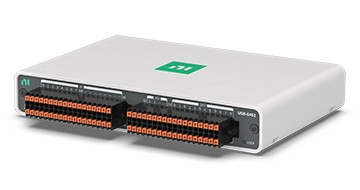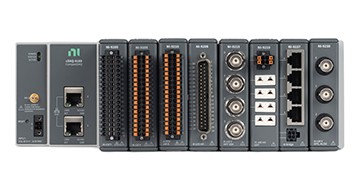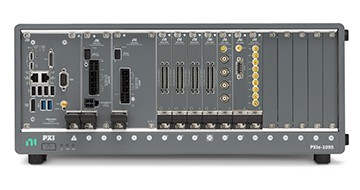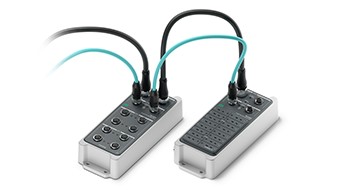What Is Data Acquisition? (DAQ)
Data acquisition (DAQ) is the process of measuring an electrical or physical phenomenon, such as voltage, current, temperature, pressure, or sound. A DAQ system consists of sensors, DAQ measurement hardware, and a computer with programmable software such as LabVIEW.

Design Your Best Products with the Best DAQ Hardware
NI DAQ systems combine a huge catalog of quality, scalable hardware with productive software you need to maximize your design and research. Choose NI when you need confidence and flexibility.
- Free data logging software included
- Support for USB, Ethernet, PCI Express, and PXI systems
- Datasheets with complete accuracy specifications
- Documented APIs with example programs—for LabVIEW, Python, C/C++, and VB.NET
- Hardware options to measure voltage, current, and any sensor
Selecting DAQ Hardware
Identifying the right DAQ system or device for your project requires considering many factors. These resources can help you choose the approach that delivers the data you need to make business decisions.
NI DAQ Product Catalog
Building a Measurement System
What NI DAQ Hardware Is Right for You?
If your measurement needs fall within ±10 VDC input/output and TTL digital signals, a multifunction I/O device provides the best performance-to-cost ratio. These all-in-one devices connect to a computer over USB or can be installed in a computer.
Recommended Uses:
- Desktop and workbench data acquisition
- ±10 V input/output and digital signals
- Sensors with 10 V output signals
For more diverse measurement options, upgrade to a CompactDAQ system. These systems include a selection of measurement modules that support various voltage and digital input ranges, a wide array of sensors, and options for isolated measurements and rugged environments.
Recommended Uses:
- Compact vibration and acoustic measurements
- Electromechanical component test systems
- High-channel count, distributed systems
For optimal system performance, upgrade to a PXI system. These systems combine and synchronize instruments with data acquisition, sensor measurements, a high-speed bus, and the latest processor technology.
Recommended Uses:
- Production test systems for electronics where minimizing test time is crucial
- Automated test systems that combine instruments with data acquisition
- High-channel-count, high-data-throughput applications
For precision performance in extreme conditions, choose FieldDAQ hardware. FieldDAQ devices are IP65/67 rated to be waterproof and dust-tight, with shock and vibration resistance over 100 g/10 grms conditions, and operating temperatures from -40 °C to 85 °C.
Recommended Uses:
- V&V of physical systems: HALT testing, structural test, outdoor test
- Large, distributed test systems
- Heavy equipment/off-road vehicle testing
- Component tests in test cells, chambers
- Academic indoor/outdoor research




